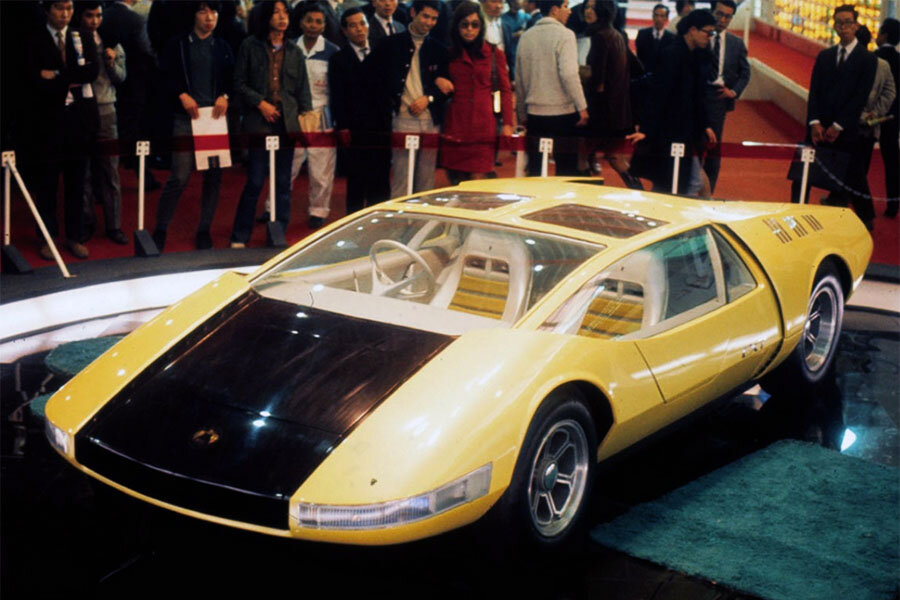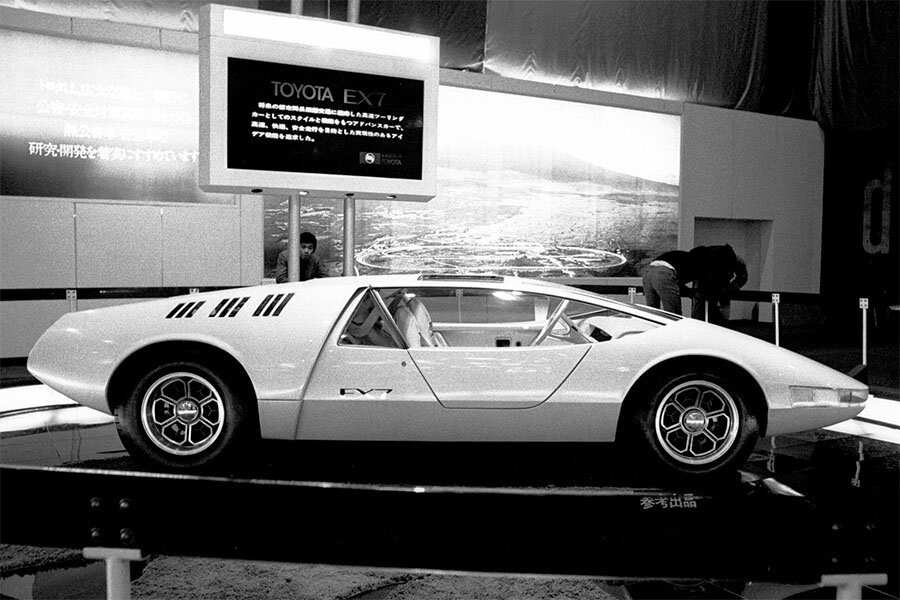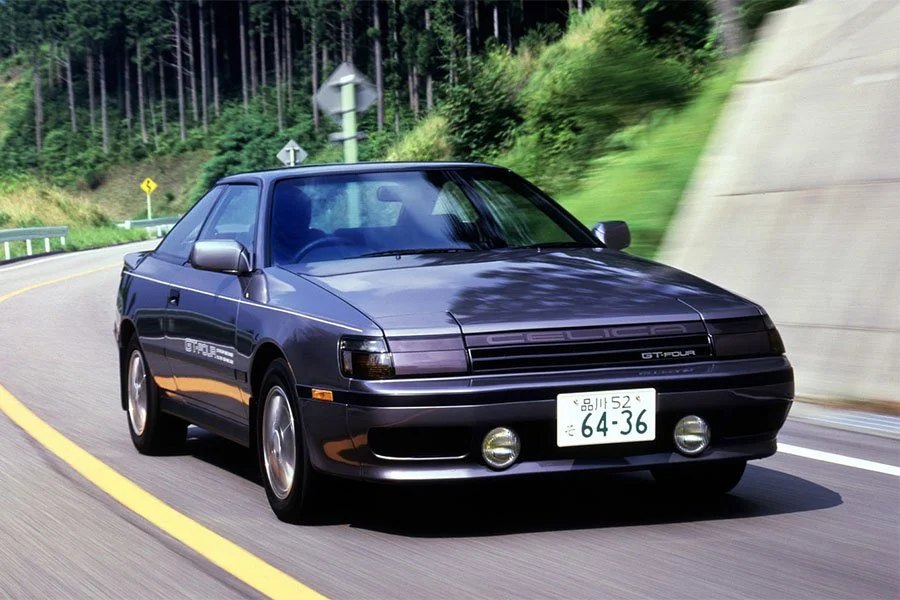Guide: Toyota EX-7 - a Historical & Technical Appraisal
/BACKGROUND
Toyota’s Group 7 programme began in the autumn of 1967 when the green light was given for it to replace the 2000 GT which had been campaigned in various disciplines since 1966.
The new Toyota racing car would be developed in line with a fresh regulatory framework to be introduced for 1968.
At the top of these new motor sport categories was Group 7 - essentially an unlimited class for machinery not eligible to compete in the World Sportscar Championship.
Group 7 imposed very few restrictions on designers and practically anything was permitted in terms of wings, wheels and engines.
Toyota followed its first Group 7 challenger, the 1968 Type 415S ‘7’, with the Type 474S ‘New 7’ for 1969.
However, although these cars won seven of the ten domestic races they contested between 1968 and 1969, more power would be needed if Toyota was to move up to international level.
As their five-litre V8 engine was at the limit of its capacity, Toyota decided to go down the turbo route.
1970 would primarily serve as a development year for the turbocharged Group 7 Toyota, although race appearances were expected at the end-of-season Japanese Grand Prix and Fuji 200 miles.
Five chassis were laid down for the new Type 578A ‘Turbocharged 7’ the first of which initially ran a normally aspirated version of the forced induction engine for evaluation purposes. Three twin turbocharged examples were then assembled.
Unfortunately, Toyota’s plans were dealt a major blow when the Japanese Automobile Federation announced the 1970 Japanese Grand Prix (the stand out event on the national calendar) would be organised for F1 machinery instead of sports cars.
Then, in August 1970, one of the Turbocharged 7s was fatally crashed at Suzuka by Toyota’s star driver, Minoru Kawai.
Although Toyota had made tentative plans to race the Turbocharged 7 in the North American Can-Am series, the Group 7 project was abandoned soon after Kawai’s death.
The three complete Type 578As were retired from active duty and wound up in Toyota’s museum. The leftover chassis was used to create a stunning supercar concept: the Toyota EX-7.
The original EX design concept was unveiled in 1966. EX-I to EX-III were then displayed at the 1969 Tokyo Motor Show.
The EX-7 was therefore the fifth EX-branded Toyota. It explored how a supercar based on competition underpinnings might look. The ‘7’ suffix was reference to its origins.
Toyota unveiled the fully operational EX-7 at the 1970 Tokyo Motor Show which took place from October 30th until November 12th.
CHASSIS
The EX-7 used the standard Yamaha-built Type 578A aluminium tubular chassis with 2250mm wheelbase.
Suspension was via double wishbones and adjustable coil sprung dampers.
Anti-roll bars were fitted at either end along with ventilated disc brakes and new six-hole cast alloy wheels.
ENGINE / TRANSMISSION
Toyota’s 90° V8 bristled with advanced features like four valve cylinder heads and Denso electronic fuel-injection.
The all-alloy DOHC unit displaced 4968cc and, with 800bhp on tap, this twin turbocharged V8 was among the most potent circuit racing engines in the world.
However, the power delivery was famed for its extreme lag which made it totally unsuitable for road use.
Accordingly, the two AiResearch turbos were removed from the EX-7’s engine.
Toyota rated the normally aspirated unit at 450bhp.
Transmission was via a reinforced Aisin Seiki CO SR-55 five-speed manual transaxle with heavy-duty clutch.
BODYWORK
The EX-7’s shape was highly reminiscent of Giorgetto Giugiaro’s recent dream car work at Ital Design.
Its sharply raked front end housed a large retractable panel that dropped down to reveal a wide bank of headlights.
The nose was angled to match the windscreen while the roof and tail swept back in a continuous low slung line uncluttered by spoilers or intake scoops.
Enormous glass panes were used for the windscreen and side windows. Toyota also integrated two small glass roof panels either side of a central T-bar.
Each combined door and roof section hinged upwards at the trailing edge; the doors opened electronically while the seats simultaneously rose upwards by around six inches to make access easier.
The back end saw Miura-style slats added to conceal the vertical rear windscreen. Like the front lid, the rear deck and back end were painted gloss black to contrast the otherwise yellow paint scheme.
Full width light clusters were set within a recessed tail fascia and two rectangular exhaust pipes exited from the centre of the rear bumper.
INTERIOR
Toyota’s designers also went to town on the interior.
Each inner seat bolster extended well forward from the rest of the squab and acted as a console for various switches and controls.
An unusual cylindrical dash was mounted to the left of the deep-dish four-spoke steering wheel.
Upholstery was a mix of light grey and yellow with two-tone seats.
Like all Toyota’s Group 7 cars, the EX-7 was right-hand drive with a centre-mounted gearshift.
WEIGHT / PERFORMANCE
Although no official weight figures were published, the EX-7 most likely tipped the scales at around 1000kg.
Top speed would probably have been in the region of 180mph with a 0-62mph time of circa five seconds.
SUBSEQUENT HISTORY
Only one EX-7 was ever built and it has not been seen in public for many years.
Text copyright: Supercar Nostalgia
Photo copyright: Toyota - https://global.toyota/



























